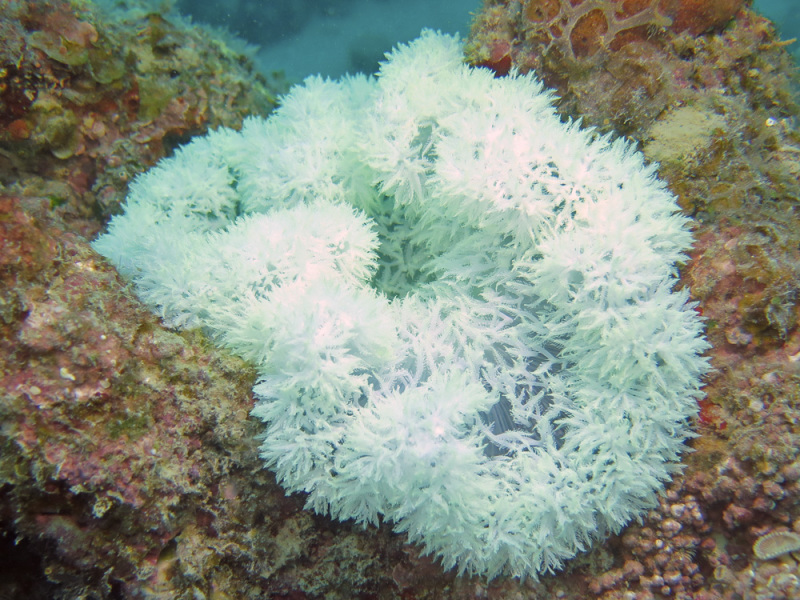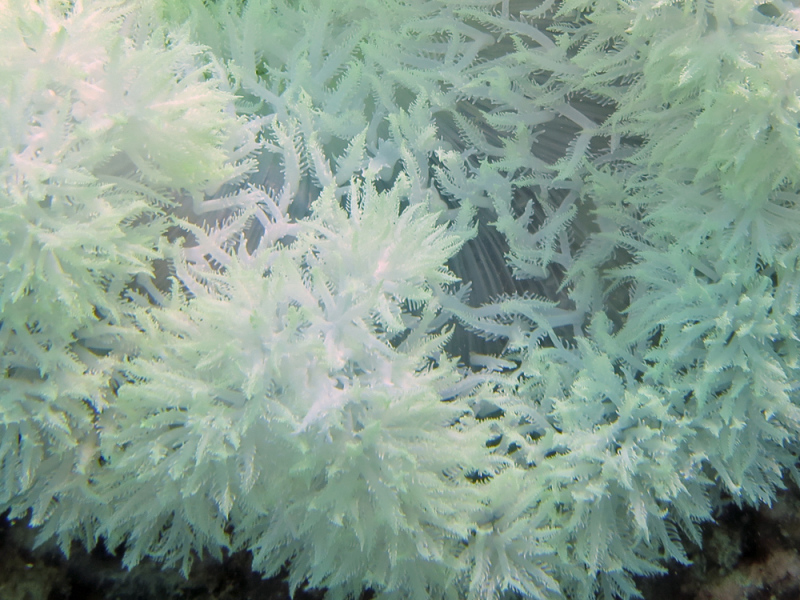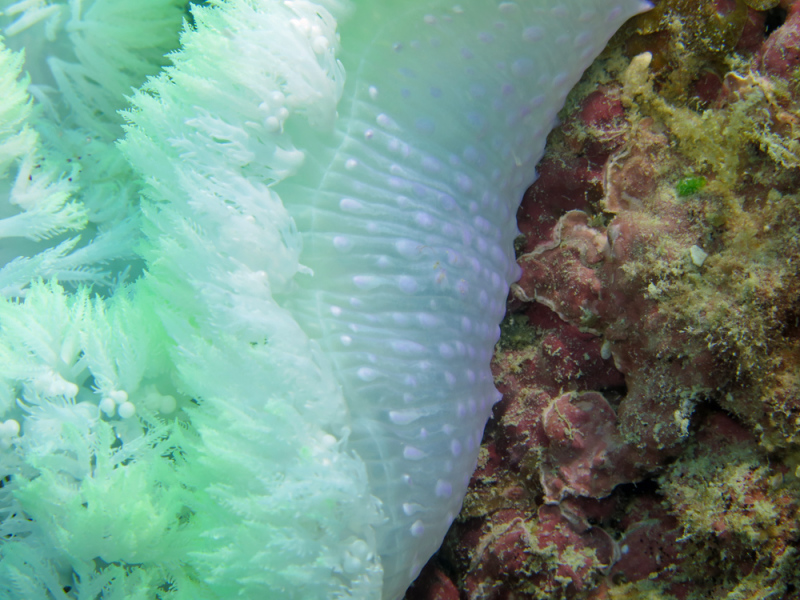
©Anne Hoggett: A bleached Thalassianthus sp. 2 about 15 cm diameter at Cobia Hole, Lizard Island. Thanks to Dr Andrea Crowther (South Australian Museum) for identifying this specimen to family level.

©Anne Hoggett: Oral disc detail of bleached Thalassianthus sp. 2 showing distinctive tree-like pinnate tentacles; at Cobia Hole, Lizard Island.

©Anne Hoggett: A bleached Thalassianthus sp. 2 showing veruccae on the column. Enlarge the image to see two types of tentacles on the oral disc; abundant pinnate tentacles and a few spherical ones called nematospheres. At Cobia Hole, Lizard Island.
Colours
Distinguishing features
Two distinct types of tentacles: abundant, tree-like pinnate ones and less abundant spherical ones called nematospheres. Usually brown, reddish or greenish with brightly-coloured nematospheres in white, yellow or purple.
Size
- Up to 15 cm (Diameter of oral disc of photographed specimen)
Synonyms
Comments
Dr Andrea Crowther provided the following information about the photographed specimen from Cobia Hole:
This is in the family Thalassianthidae. It is a small family, with only four genera (at the moment). This one would probably usually be identified as Thalassianthus, Actineria, or Heterodactyla; the main difference between them seems to be size. Because of this, I think they are probably all in the one genus, Thalassianthus.
But as for species known in that area: Heterodactyla hemprichii (known from GBR), Heterodactyla hypnoides (type locality of GBR), Actineria villosa (type locality Torres Strait). However, again, as they have very wide tropical distributions, this is not always the best reasoning!
Usually, these anemones will be brown or reddish (due to the zooxanthellae), sometimes greenish. The majority of their tentacles are the tree-like pinnate ones. They have a second type of tentacle, called the nematospheres, and these are the round ball-shaped ones. These are defensive in purpose, and are packed full of specialised nematocysts. Usually, these are a different colour to the other tentacles, like a bright purple or white or yellow.
As for not seeing them before, perhaps they are usually better camouflaged on the rocks. Especially if they were a brown colour to begin with. They also don't always have prominent positions on the reef (as opposed to something like Heteractis magnifica), slightly more cryptic in crevices and such. But they do need access to sunlight for their zooxanthellae!
by Anne Hoggett